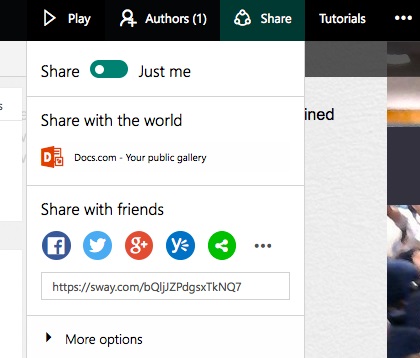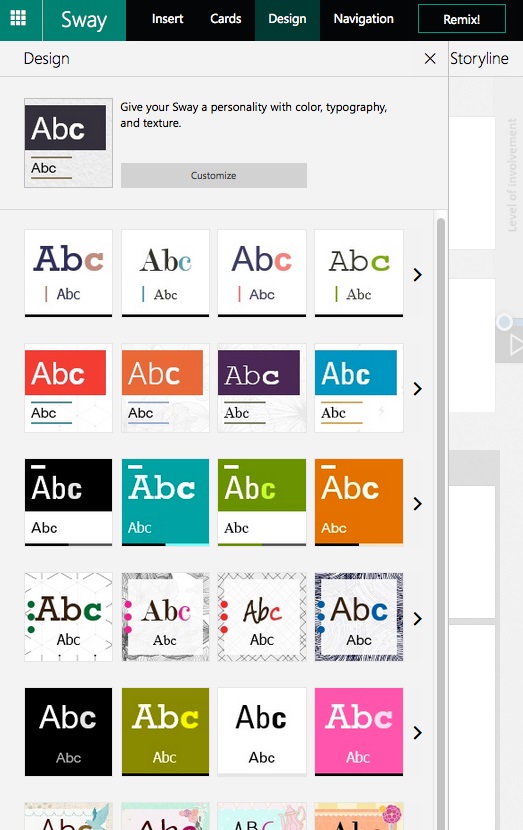Students spend more time playing around with presentation software than you might think. Shouldn’t they be using that time on the material itself?
Imagine if there was presentation software that could give students and teachers what they want, while reducing time and energy spent on aspects of the task that don’t impact the final grade.
Imagine software that eliminated most of the design and technical knowledge while still producing a professional product — with a minimal learning curve.
Presentations are a key part of the academic world, and multimodal assignments are frequently assigned. In most cases, the teacher wants to know what the student knows and understands about the topic being presented. The knowledge of how to use the software and the design principles (i.e. their understanding of appropriate font size and color, image placement and size, white space, etc.) is rarely reflected in the criteria/rubric used to grade the presentation.
But while teachers sometimes say that they will only mark the content, the look and feel of the final product can still have an impact.
And yet the amount of time needed to learn to use (and actually implement) the software and the design/layout of the presentation can be significant. Both of these things have a substantial effect on the quality of the final presentation.
Students can spend as much time on the design and the software as the actual content
 One possible breakup of the knowledge required to create a multimodal presentation, and the time required to create the assignment. The proportions may vary, but will be significant for anything but a basic task.
One possible breakup of the knowledge required to create a multimodal presentation, and the time required to create the assignment. The proportions may vary, but will be significant for anything but a basic task.
Yet students are only graded on half the work they’re actually doing
Grades in many multimodal assignments are allocated solely to knowledge and understanding of the topic.
While software like PowerPoint, Keynote, Prezi, Weebly and the like have tried to simplify these areas by the use of templates and similar features, software that automates the design process — called design automated software — can take the simplification process much further.
Enter: design automated software
 So-called design automated software has an intuitive design process and a shallow learning curve — freeing up time that could be more profitably spent on other areas of study.
So-called design automated software has an intuitive design process and a shallow learning curve — freeing up time that could be more profitably spent on other areas of study.
Key features of design automated software
Design automated software takes the hassle out of creating presentations. Among other things, it:
- Automates photo cropping. Instead of using specialist image manipulation software all that has to be done is click on the areas that need to be focused on; the software then adjusts the image appropriately (for all screen sizes and platforms).
- Chooses suitable fonts, sizes and colors automatically making the decisions needed according to the color palette chosen.
- Automatically makes text bold or italics, and adjust other features as needed. All the user needs to do is choose which text needs accent or emphasis and the app does the rest.
- Allows most types of media to be inserted easily, and has the ability to automatically create a variety of slide shows, photo albums and photo “comparisons”, all beautifully presented and created simply and easily without any coding or technical knowledge.
- Has image search built in, with automatic suggestions for searches generated from the text in the presentation with Creative Commons licenses being the search default.
- Changes the design and/or layout of your presentation with the click of a button, with all of the design elements adjusted automatically so that the presentation remains well designed.
- Can import an existing PowerPoint presentation (and more), and can then work with the existing information and design elements so that the new presentation has only minor adjustments needed.
- Allows sharing and collaboration, with multiple authors able to edit the presentation in real time.
- Dynamically adjusts in size to suit the device, from smartphones to large screen computers.
Design automated software will change the way presentations are produced. They will improve the look and feel of presentations while also allowing students and teachers to focus on the key element of what they are trying to achieve, namely to demonstrate and communicate information and knowledge.
The forerunner of design automated software
Sway by Microsoft is the forerunner in the field of design automated software.
It does all of the things mentioned, and much more. It is web-based and has an intuitive interface. I recently had a sixth-grade student discover Sway. He explored by himself and had a presentation on an assigned task completed in record time. He then taught a few classmates, also in record time. All students found it easy to use.
Sway is available free of charge online. It is “real” freeware; it is not supported by advertisements. It works across a wide range of platforms, from desktop computers to phones. A large number of user created examples are available on the site, as are tutorials. (This two and a half minute video overview is very informative.)
Sway uses a lot of drag-and-drop
Sway uses an intuitive “card” based interface. Simply drag the type of card you want from the list on the left to the work area. You can then click or drag elements like images onto the card and type text, etc.
Collaboration with others and social media sharing is easy
Sway has a wide range of sharing options. Collaboration, with multiple authors editing a Sway in real time, is also possible.
You can even search for copyright-friendly images
Find the best presentation theme in just a few clicks
Changing the look of a presentation is as easy as choosing a color scheme and style. Every part of the design change is done automatically. There is even a Remix button (at the top right) to let Sway choose an appropriate layout and design.
The era of design automated software has arrived. Sway has already shifted the goal posts in this area. Students and teachers no longer need to struggle with technical concepts of design and specialist software in order to create presentations with a professional look and feel. They can instead now focus on the key elements of their task, namely the information and knowledge that needs to be conveyed.
This is technology living up to its promise — making tasks easier, more effective and more efficient.
- TC- What student choice and agency actually looks like - November 15, 2016
- What student choice and agency actually looks like - November 14, 2016
- App of the Week: Science sensor meets your smartphone - November 14, 2016






